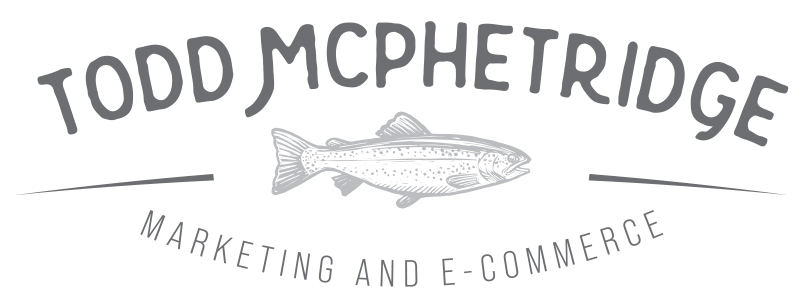Customer acquisition costs do not rise in a straight line. They jump when platforms change, when competitors flood auctions, and when audiences tire of familiar pitches. DTC brands that rely on the same playbook quarter after quarter feel the strain first. A durable demand engine fixes this by widening qualified reach, improving conversion economics, and compounding owned audiences so paid media becomes an accelerator rather than the only driver.
Below is a practical design for a demand engine you can deploy in one quarter. It centers on five motions: diagnose, plan, execute, measure, and iterate. Each motion ties to specific inputs, outputs, and leadership decisions that a Marketing Consultant can own.
Why CAC Rises and What It Signals
- Audience fatigue: frequency builds faster than creative depth, so you pay more for the same attention.
- Shallow intent capture: traffic arrives, but category, offer, and proof are not aligned.
- Weak mid-funnel: education, comparison, and reassurance are missing, so prospects bounce to search and convert elsewhere.
- Pricing and promotions used as a crutch: discounts pull revenue forward and damage long-term margin.
- Data and reporting spread across tools: leaders cannot see contribution by channel or by program, so budgets stay stuck.
The cost of inaction is simple. If CAC rises ten percent and conversion rate falls one tenth of a point, your blended payback period can slip by weeks. That delay constrains inventory, cash, and product roadmaps.
The Demand Engine Blueprint
A demand engine is a managed system that converts market attention into pipeline and revenue with three compounding flywheels:
- Market creation: thought leadership, partnerships, creators, and PR that shape category language and generate searches you can win.
- Demand capture: SEO, comparison pages, high-intent search, affiliates, and onsite CRO that convert shoppers already in the market.
- Demand expansion: lifecycle programs, referral, and product-led triggers that lift LTV and improve CAC to LTV ratios over time.
Data callout: In consumer categories with price points from 75 to 350 dollars, brands that lift email and SMS opt-in rates from 2 percent to 5 percent often see a 15 to 30 percent improvement in blended CAC within two quarters. (Source: Industry benchmarking, 2025).
Diagnose: Prove Where Money Leaks
Start with a compact diagnostic that fits in two weeks.
- Acquisition mix: spend by channel, CAC by cohort, first-order ROAS, and payback period.
- Path analysis: top five entry pages, bounce and scroll depth, time to first purchase, and assisted conversions.
- Offer architecture: pricing ladders, bundles, add-ons, and risk reducers such as trials and guarantees.
- Creative library: concepts mapped to jobs to be done, not only product features.
- Data foundations: UTM hygiene, post-purchase survey, server-side tracking, and a single source of truth for KPIs.
Deliverable: a one-page map of leaks with impact estimates and the minimal tests to validate the fix.
Plan: Set Guardrails and Targets
Planning is not a slide deck. It is a budget with rules.
- Guardrails: maximum CAC by product tier, minimum contribution margin by channel, and a weekly stop-loss for underperforming tests.
Targets
- Blended CAC: improve by 10 to 15 percent in 90 days.
- Opt-in rate: 2 percent to 5 percent sitewide.
- PDP conversion: plus 20 percent on core SKUs through offer and proof changes.
- Paid media waste: reduce by 15 percent through negative keywords, audience pruning, and creative rotation.
Execute: Programs That Move the Needle
1) High-intent capture
- Launch comparison and “best for” pages tied to evaluation queries.
- Build a partner and affiliate layer that ranks on those queries and feeds warm traffic.
- Add price-justification blocks to PDPs: cost-per-use math, materials, origin, and care.
2) Creative and offer system
- Operate with four creative pillars: product utility, lifestyle proof, social validation, and founder credibility.
- Use offer ladders by AOV: first-time bundle, add-on at checkout, and post-purchase cross-sell.
- Refresh hooks every two weeks, while keeping the brand spine consistent.
3) Lifecycle and retention
- Grow owned lists with clean incentives: early access, limited runs, and practical guides tied to use cases.
- Build three core flows first: welcome, abandoned browse and cart, and post-purchase.
- Add a milestone program that turns usage events into shareable stories.
4) Conversion discipline
- Onsite experiments that pay for themselves: trust blocks above the fold, fewer choices on mobile, size and fit clarity, and shipping transparency.
- Remove surprise. Show delivery windows and return policy before the add to cart click.
Measure: What “Good” Looks Like
Use a single scorecard that leaders can read in five minutes.
- Blended CAC: total paid media plus attributable content and program costs divided by first-order contribution margin.
- Payback period: contribution margin from repeat orders required to cover acquisition cost, measured in days.
- Opt-in rate: unique subscribers divided by unique visitors.
- Conversion rate by entry intent: home, PDP, comparison, and content.
- Creative efficiency: spend to first purchase by concept family, not only by ad.
- LTV to CAC by cohort: track cohorts by first-touch channel and by offer.
Formulas should live in your reporting workbook, not in a slide.
Iterate: Cadence That Builds Compounding Gains
- Weekly: guardrail checks, budget shifts, creative rotation, and top insight.
- Biweekly: experiment readouts and next test slate.
- Monthly: cohort performance, inventory and merchandising alignment, and roadmap commits.
- Quarterly: pricing and packaging review, category language, and media mix modeling.
Mini Case Example
A DTC wellness brand selling a 120 dollar hero product faced CAC that had risen from 55 to 72 dollars in one quarter. Diagnostics showed heavy reliance on lookalike audiences, thin comparison content, and scattered PDP proof.
Actions taken in 60 days:
- Built three comparison pages and two buyer-guide assets that ranked for evaluation keywords.
- Consolidated PDP proof into a single trust stack with materials, certifications, and long-form reviews.
- Introduced a starter bundle with a practical add-on at checkout.
Results over 90 days:
- Blended CAC fell to 61 dollars.
- Opt-in rate increased from 2.1 percent to 4.7 percent.
- PDP conversion lifted 24 percent.
- Payback period shortened by 19 days.
30/60/90-Day Action Plan
| Timeframe | Priority | Owner | KPI Target | Notes |
|---|---|---|---|---|
| Days 1–30 | Diagnostic, scorecard, guardrails | Marketing Consultant + Analytics | Scorecard live; guardrails signed | Audit channels, offers, creative, data |
| Days 1–30 | Launch comparison pages and partner briefs | Content + SEO + Partnerships | Five pages live; five partners briefed | Tie to evaluation keywords |
| Days 1–30 | Core lifecycle flows | CRM | Welcome, browse, cart, post-purchase live | Capture zero-party data early |
| Days 31–60 | Creative pillar rotation and offer ladders | Paid + Creative | Reduce paid waste 10 to 15 percent | Test hooks and keep brand spine steady |
| Days 31–60 | CRO sprint on top SKUs | Product + UX | PDP conversion plus 15 to 20 percent | Trust stacks and delivery clarity |
| Days 31–60 | Affiliate and creator layer | Partnerships | Ten active partners | Supply briefs and assets |
| Days 61–90 | Media mix modeling light | Analytics | Budget reallocation plan | Shift dollars to highest intent |
| Days 61–90 | Pricing and bundle review | RevOps + Finance | Margin-safe packages live | Introduce add-ons and milestones |
| Days 61–90 | Cohort LTV tracking | Analytics | LTV to CAC by channel in scorecard | Use for Q4 planning |
What a Marketing Consultant Owns
- Strategy and roadmap: choose the few programs that change trajectory.
- Team orchestration: align in-house staff and vendors to a single plan.
- Budget governance: move dollars weekly with guardrails.
- Vendor management: clear briefs, deliverables, and exit criteria.
- Reporting cadence: one scorecard, one meeting, one decision owner.
This role converts scattered tactics into a demand engine that compounds. The goal is not to chase the cheapest click. The goal is to make each click worth more.

















